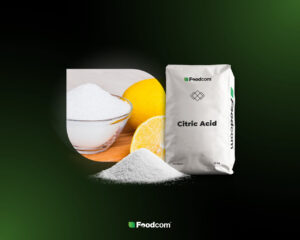- HS Code is a code which can help identify and classify traded goods for import and export.
- CAS Number is used to uniquely identify any chemical substance.
- HS Code and CAS Code differ in purpose, type of goods and number of digits.
HS Code and CAS code are indispensable tools in international trade or more generally in the classification of goods. It is important to know how to use them – they help customs officials detect import and export discrepancies. They are also a reliable, common, and international link to each specific substance across the various nomenclatures and disciplines used by the branches of science, industry, and regulatory agencies. That’s why we present a complete guide to the HS and CAS Codes! Be sure to read on!
What is a HS code?
The HS (Harmonized System) Code is a standardized international classification of traded products arranged by category. This system was introduced by the World Customs Organization in 1988. The HS is updated every few years and currently includes more than 500 commodity groups and is in force in more than 200 countries, including the member states of the European Union, the United States, China, and Japan.
The HS code is very important when the goods are to be shipped overseas. This code is used to determine the appropriate duty and tax rate. If the HS code is not indicated on the invoice or other document, the shipment delivery may be delayed while the recipient may pay the wrong tax. This harmonization of procedures, achieved through the use of the HS code, reduces the cost of international trade.
HS code general rules
The HS is divided into 21 sections, which are divided into 99 chapters. The 99 chapters of HS are in turn subdivided into 1,244 headings and 5224 subheadings. Each item is assigned a code consisting of six digits. The first two digits stand for the division in the section, the next two for the respective category and the last two for the subheading of the selected commodity category.
There are also six general rules, known as the “General Rules for the Interpretation of the Harmonized System” (GIRs). They establish classification principles that provide a step-by-step basis for the classification of goods in the Harmonized System, first at the four-digit heading level and then, if necessary, separately at each level below.
HS code sections
Section I: Live animals; animal products
Section II: Vegetable products
Section III: Animal or vegetable fats and oils and their cleavage products; prepared edible fats; animal or vegetable waxes
Section IV: Prepared foodstuffs; beverages, spirits, and vinegar; tobacco and manufactured tobacco substitutes
Section V: Mineral products
Section VI: Products of the chemical or allied industries
Section VII: Plastics, Rubber, articles thereof
Section VIII: Raw hides and skins, leather, furskins and articles thereof; saddlery and harness; travel goods, handbags and similar containers; articles of animal gut
Section IX: Wood and articles of Wood; wood charcoal; cork and articles of cork; manufacturers of straw, of esparto or of other plaiting materials; basketware and wickerwork
Section X: Pulp of wood or of other fibrous cellulosic material; waste and scrap of paper or paperboard; paper and paperboard and articles thereof
Section XI: Textile and textile articles
Section XII: Footwear, headgear, umbrellas, sun umbrellas, walking sticks, seat-sticks, whips, riding-crops and parts thereof; prepared feathers and articles made therewith; artificial flowers; articles of human hair
Section XIII: Articles of stone, plaster, cement, asbestos, mca or similar materials; ceramic products; glass and glassware
Section XIV: Natural or cultured pearls, precious or semiprecious stones, precious metals, metals clad with precious metal, and articles thereof; imitation jewelry; coin
Section XV: Base metals and articles of base metal
Section XVI: Machinery and mechanical appliances; electrical equipment; parts thereof; sound recorders and reproducers, television image and sound recorders and reproducers, and parts and accessories of such articles
Section XVII: Vehicles, aircraft, vessels and associated transport equipment
Section XVIII: Optical, photographic, cinematographic, measuring, checking, precision, medical or surgical instruments and apparatus; clocks and watches; musical instruments; parts and accessories thereof
Section XIX: Arms and ammunition; parts and accessories thereof
Section XX: Miscellaneous manufactured articles
Section XXI: Works of art, collectors’ pieces and antiques
Examples of products in HS Code
- Lysine: 29224100
- Caffeine: 29393000
- Corn Starch: 11081200
- Skimmed Milk Powder: 04021010
- Lactic Acid: 29181110
What is a CAS code?
The CAS code, known also as CAS number, is a unique identification number assigned to each chemical substance by the Chemical Abstracts Service (CAS – hence the name). It provides an unambiguous way to identify a chemical substance or molecular structure when sometimes multiple generic, historical, commercial, or market names are known. However, the CAS code is only an indication and not a unique feature of the product.
The CAS database contains more than 204 million organic and inorganic substances published in the literature since the early 1800s and is updated daily.
In the CAS database you will find the codes for: organic and inorganic compounds, metals and alloys, minerals, coordination compounds and organometallics, elements, Isotopes, and nuclear particles, proteins and nucleic acids, polymers, non-structurable materials and those of unknown or variable composition and biologics.
CAS format
The CAS code contains up to 10 digits and is divided into three parts by hyphens. The first consists of two to seven digits, the second consists of two digits, and the third consists of a single digit that serves as a check digit. No special meaning is assigned to the first and second parts of the CAS number, while the check digit is determined by a special algorithm. It is used to verify the validity and uniqueness of the entire number.
The check digit is obtained by adding the product of the first final digit multiplied by 1, the second final digit multiplied by 2, the third final digit multiplied by 3, and so on. The resulting sum is divided by 10, and the remainder of this quotient is the check digit.
Examples of products in CAS Number
- Citric Acid: 77-92-9
- Sodium Chloride: 7647-14-5
- Magnesium Oxide: 1309-48-4
HS code vs. CAS number
HS and CAS codes can sometimes be confused, so it is good to know their differences. They differ in:
- types of goods: the HS code applies to all types of internationally traded goods, while the CAS code applies only to chemical substances,
- purpose: the HS code is used to identify and classify traded goods for import and export, the CAS code is used to uniquely identify chemical substances,
- number of digits: the HS code usually has 6 digits, but can have 8-10 digits, the CAS code has 5 to 10 digits, including three parts separated by hyphens, the last digit is the check digit.
Why Foodcom?
Our great team of Sales Support will help our Traders conduct the contract and business deals in a smooth and efficient way to ensure the best quality service to all our Business Partners. Our logistics team will take care of transportation and the financial department will be responsible for all matters connected with the financial part of the deal. Do not hesitate! Contact us.








